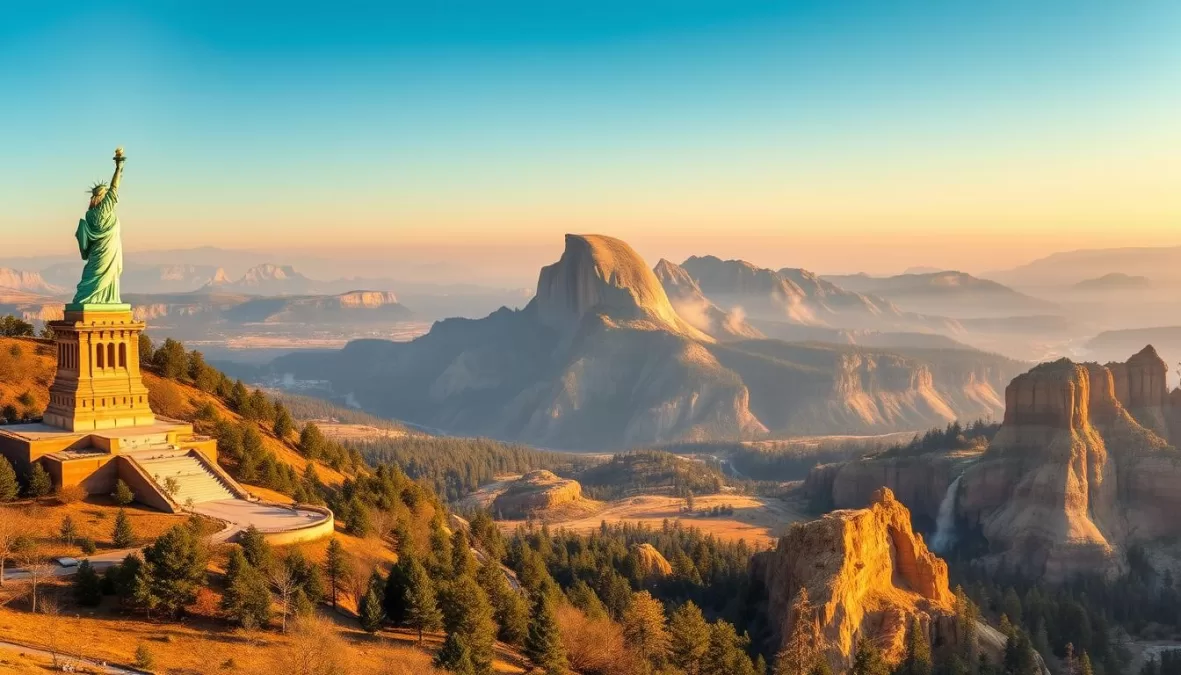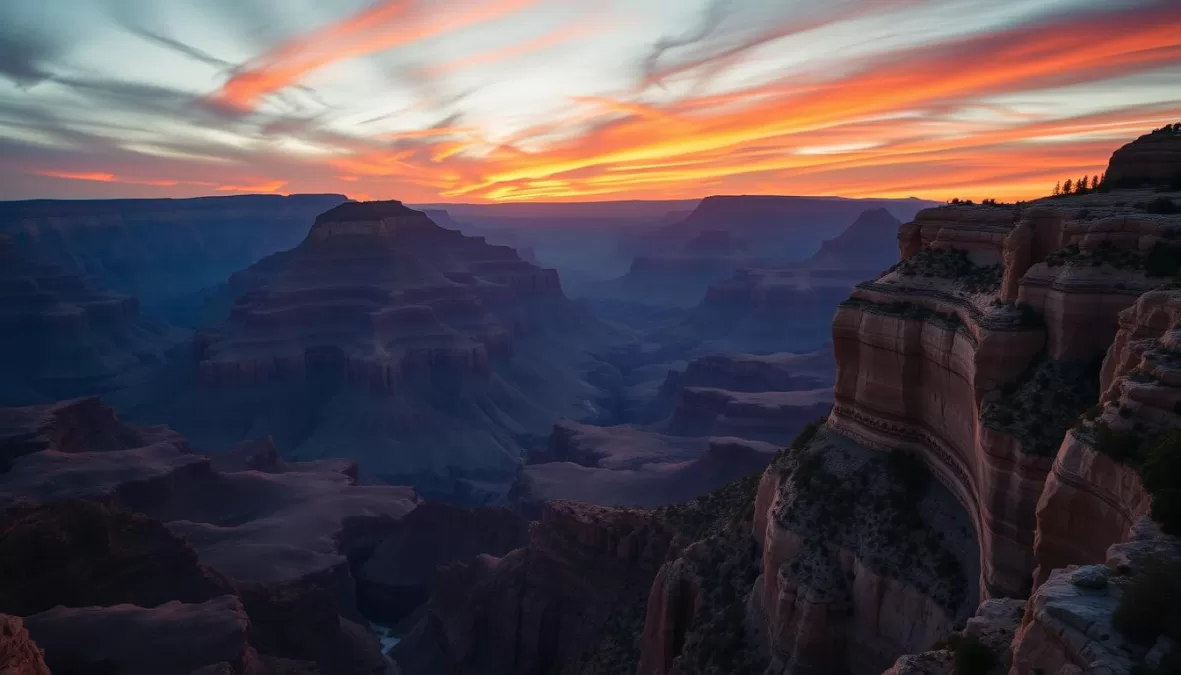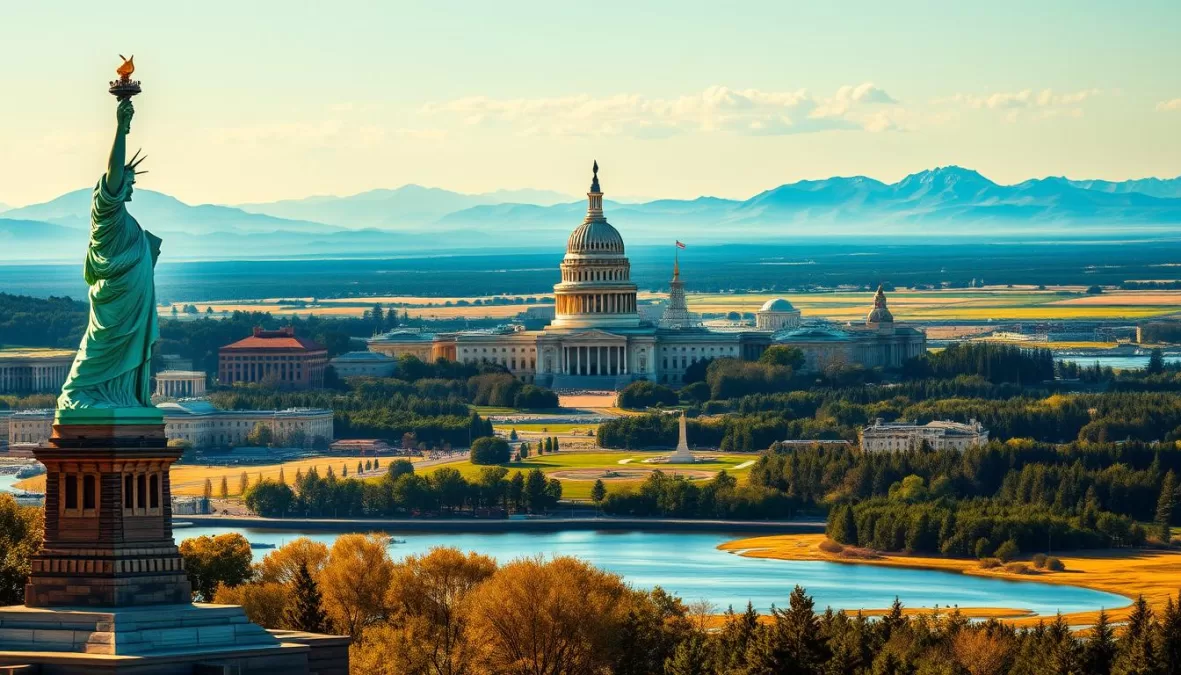On April 18, people around the globe will come together to celebrate World Heritage Day, also known as the International Day for Monuments and Sites.
This annual event, observed on April 18, encourages individuals to appreciate and protect the world’s cultural and natural heritage.
The United States is proud to be home to 24 UNESCO World Heritage Sites, showcasing exceptional cultural and natural places with outstanding universal value.
From iconic landmarks like the Statue of Liberty to the breathtaking natural wonder of the Grand Canyon, America’s heritage sites tell the story of both human achievement and natural evolution.
Key Takeaways
- Celebrate World Heritage Day on April 18, 2025, by exploring America’s rich cultural and natural heritage.
- Discover the 24 UNESCO World Heritage Sites in the United States.
- Understand the significance of preserving cultural and natural heritage for future generations.
- Learn how to participate in this global celebration and raise awareness about heritage conservation.
- Explore the diverse heritage sites across America, from historical monuments to natural wonders.
The Significance of World Heritage Day 2025
As we approach World Heritage Day 2025, it’s essential to understand the significance of this global event. World Heritage Day is celebrated annually to raise awareness about the importance of cultural and natural heritage.
What Is World Heritage Day?
World Heritage Day is an international observance that highlights the cultural and natural heritage sites around the world. It is a day to appreciate the diversity of human culture and the natural environment.
The 2025 Theme: Heritage under Threat
The official theme for World Heritage Day 2025 is: “Heritage under Threat from Disasters and Conflicts: Preparedness and Learning from 60 years of ICOMOS Actions.” This theme emphasizes the urgent need to protect cultural heritage that is increasingly at risk due to natural disasters, armed conflicts, and climate-related threats.
The 2025 theme addresses the increasing vulnerability of cultural and natural heritage sites worldwide. Key points include:
- The recognition of ICOMOS’s 60-year legacy in developing strategies to protect heritage during crises.
- The impact of natural disasters and human-caused conflicts on heritage sites.
- The need for preparedness and proactive measures to safeguard heritage.
America’s UNESCO World Heritage Sites
America’s UNESCO World Heritage Sites represent the country’s exceptional cultural and natural places with outstanding universal value. The United States is home to 24 of these prestigious sites, which are recognized for their significance in history, culture, and natural beauty.
Natural Wonders
The United States is blessed with diverse natural landscapes that have been designated as UNESCO World Heritage Sites. These include national parks and natural reserves that showcase the country’s unique geological features and biodiversity.
Cultural Landmarks
Cultural landmarks are another significant category of UNESCO World Heritage Sites in the United States. These sites include historic cities, monuments, and architectural achievements that reflect the country’s rich cultural heritage.
Mixed Heritage Sites
Mixed heritage sites in America combine outstanding natural landscapes with significant cultural or historical elements. For example, Papahānaumokuākea in Hawaii is both a natural marine sanctuary and a sacred cultural landscape for Native Hawaiians. Similarly, Mesa Verde National Park preserves spectacular cliff dwellings of the Ancestral Puebloan people, while Chaco Culture National Historical Park contains the most exceptional concentration of pueblos in the American Southwest.
| Site Name | Location | Description |
|---|---|---|
| Papahānaumokuākea | Hawaii | Natural marine sanctuary and sacred cultural landscape |
| Mesa Verde National Park | Colorado | Preserves cliff dwellings of the Ancestral Puebloan people |
| Chaco Culture National Historical Park | New Mexico | Contains exceptional concentration of pueblos |
These mixed sites highlight the connection between cultural practices and natural environments that have shaped American history. They often require specialized conservation approaches that address both natural ecosystem protection and cultural heritage preservation simultaneously.

Top 5 American Heritage Sites to Visit in 2025
America’s rich cultural heritage and breathtaking natural landscapes are showcased in the top 5 World Heritage Sites to visit in 2025. These sites not only reflect the country’s diverse history and culture but also offer unforgettable experiences for visitors.
Grand Canyon National Park, Arizona
The Grand Canyon is one of Arizona’s most iconic natural wonders, attracting millions of visitors each year. Its vast expanse and stunning vistas make it a must-visit destination.

Statue of Liberty, New York
The Statue of Liberty is a symbol of freedom and democracy, standing tall in New York Harbor. Visitors can explore the statue and its history through guided tours.

Independence Hall, Philadelphia
Independence Hall is where the Declaration of Independence and the United States Constitution were signed. It is a pivotal site in American history and a must-visit for history enthusiasts.

Yellowstone National Park, Wyoming
As America’s first national park, Yellowstone is renowned for its geothermal features like Old Faithful and its diverse wildlife. It’s a paradise for nature lovers and those seeking adventure.

San Antonio Missions, Texas
The San Antonio Missions, including the Alamo, represent the Spanish colonial influence in the Southwest. They are a testament to the complex cultural interactions between European colonizers and indigenous peoples.

The History and Evolution of World Heritage Day
The history of World Heritage Day is deeply intertwined with the global efforts to preserve our cultural and natural heritage. This day is a culmination of international cooperation and commitment towards heritage conservation.
The journey of World Heritage Day began with its origins tied to the International Council on Monuments and Sites (ICOMOS). Understanding its roots is crucial to appreciating its significance.
Origins with ICOMOS
World Heritage Day was conceived by ICOMOS as a means to promote cultural heritage and raise awareness about the importance of preserving historical sites. The idea was to dedicate a day to highlighting the value of heritage sites around the world.
UNESCO’s Role in Preservation
The UNESCO General Assembly formally established World Heritage Day in 1983 during its 22nd General Conference. UNESCO’s involvement not only elevated the status of this day but also integrated it into its broader mission of promoting peace through international cooperation in education, science, and culture.
| Year | Event | Significance |
|---|---|---|
| 1972 | Adoption of World Heritage Convention | Established framework for identifying and protecting sites of outstanding universal value |
| 1983 | UNESCO General Assembly approval | Formally established World Heritage Day, giving it international recognition |
| Present | Ongoing conservation efforts | Continues to promote heritage conservation for future generations |
The day reminds us that preservation efforts extend beyond physical monuments to include natural landscapes and intangible cultural expressions. Thus, Heritage Day serves as a vital reminder of our collective responsibility towards preserving our shared heritage.

How to Celebrate World Heritage Day 2025 in America
As World Heritage Day 2025 approaches, Americans have a unique opportunity to engage with their rich cultural and natural heritage. There are numerous ways to celebrate this significant day across the United States.
Local Heritage Site Visits
Visiting local heritage sites is a great way to start. Many of America’s UNESCO World Heritage sites, such as the Grand Canyon and the Statue of Liberty, offer special events and guided tours on World Heritage Day.
Educational Activities and Workshops
Educational activities and workshops provide another engaging way to celebrate. Many heritage organizations and museums host events that offer insights into America’s rich cultural and historical heritage.
Digital Celebrations and Social Media Campaigns
For those who cannot visit in person, digital celebrations offer an alternative. Virtual tours, live streams, and social media campaigns using hashtags like #WorldHeritageDay2025 and #AmericanHeritage can help raise awareness and create a global community around heritage preservation. Some key digital activities include:
- Virtual tours of American heritage sites
- Live streams and webinars with conservationists and historians
- Social media campaigns to share personal stories and photos of heritage sites
Preserving America’s Heritage: Challenges and Solutions
The preservation of America’s heritage sites is threatened by various factors, including urbanization and climate change. As we observe World Heritage Day 2025, it’s essential to acknowledge these challenges and explore potential solutions.
Current Threats to Heritage Sites
World Heritage Day raises awareness about the myriad threats to heritage sites, such as neglect and war. These sites are not just historical landmarks but also hold significant cultural and natural value.
Conservation Efforts and Initiatives
Various conservation efforts are underway to protect America’s heritage. These include practicing responsible tourism, supporting heritage sites financially, and participating in citizen science programs.
| Conservation Method | Description | Impact |
|---|---|---|
| Responsible Tourism | Following site guidelines and staying on designated paths | Minimizes visitor impact |
| Financial Support | Entrance fees, memberships, donations, volunteering | Crucial resources for conservation |
| Citizen Science | Participating in monitoring and research efforts | Supports heritage conservation |
How Visitors Can Help Preserve Sites
Visitors play a significant role in preserving heritage sites. By learning about a site’s history and significance before visiting, individuals can create more meaningful experiences and foster appreciation for preservation efforts. Additionally, sharing authentic stories about heritage sites on social media helps counter misinformation and builds broader public support. Teaching children to value these sites instills conservation ethics in future generations, ensuring the preservation of our heritage for years to come. At the same time, reducing our carbon footprint helps mitigate climate change impacts, preserving these treasures over time.
By working together and taking these steps, we can help preserve America’s rich heritage for generations to come.
Conclusion: Embracing Our Shared Heritage
The celebration of World Heritage Day 2025 highlights the importance of preserving America’s cultural and natural legacy. It’s a time to appreciate the diverse array of heritage sites that tell our collective story.
By exploring and preserving these sites, we ensure they remain for future generations. Let’s celebrate our shared heritage and contribute to a more informed society. Happy World Heritage Day!





